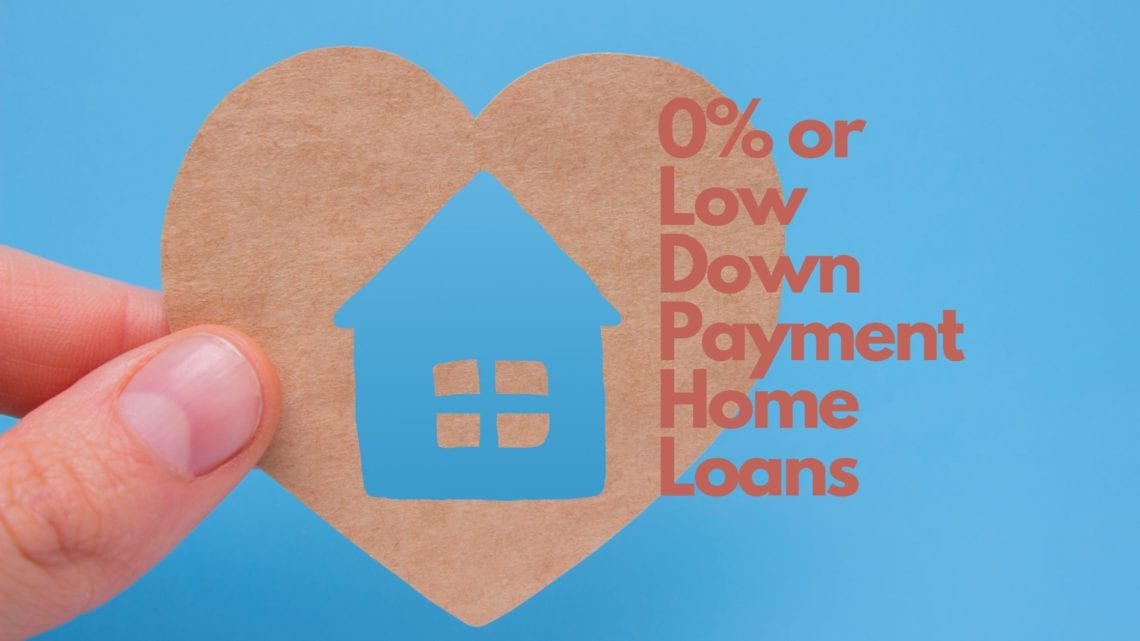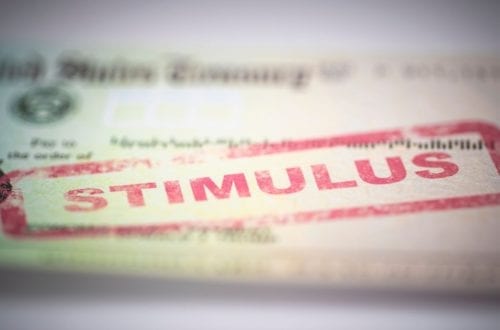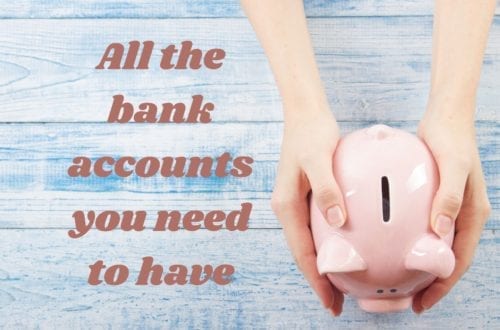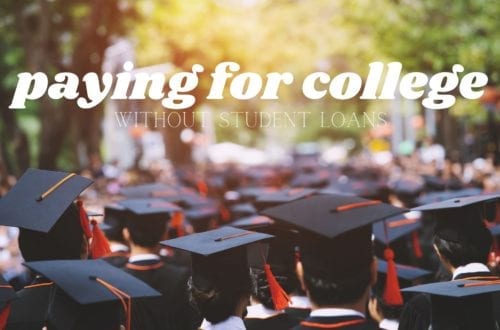
How to buy a home without a 20% down payment
As an Amazon Associate I earn from qualifying purchases. We may earn money or products from other companies mentioned in this post at no cost to you!
Reading Time: 5 minutesSo you want to buy a home, but you don’t have a huge down payment. Heck, you don’t have $20,000 to pay outright for a new car, let alone a 20% down payment for a house!
There are many reasons first-time home buyers don’t have a full 20% down payment for a home. Besides the obvious high levels of car, credit card, and student loan debt, home prices are just plain high in many areas of the country.
Regardless whether $400,000 will get you a nice home in North Carolina or a fixer-upper in the metro area of Oregon, you still have to come up with $80,000 in cash to provide that 20% down payment! That’s a huge chunk of money. Plus, you should have a fully funded emergency fund in addition to that?! This is why people feel it’s impossible to buy a home.
If you have the means, and you’re dedicated and focused with your finances, you could have that emergency fund and a house down payment, I know it’s not impossible. However, for the majority out there, this could be extremely hard to accomplish.
Thankfully, there are programs out there for first-time home buyers, even those with marginal or bad credit, that require little or no down payment. I’ll go through these and you can decide for yourself what is right for you.
Home loan programs that require little or no down payment
Here’s the list of low down payment loan programs available today:
- VA loans
- USDA loans
- FHA loans
- Conventional 97
- 80/10/10 loans
- HomeReady™ Mortgage
Remember, putting down less than 20% means you’ll have to include PMI (private mortgage insurance) as part of your payment. PMI is insurance for the lender in case of foreclosure. It’s roughly $100 for every $100,000 borrowed so PMI on $200,000 would be approximately $200. You can try to have this removed later by refinancing when you’re confident you have 20% equity (the home’s market value minus the loan amount) in your home.
You could request to have PMI removed by paying your loan down to 80% of the purchase price, but you’re here to find out about low down payment loans so I assume you’re not expecting an big infusion of cash to be able to eliminate PMI this way.
These little down payment home loan options all have different terms and nuances to them so you’ll have decide what may work best for you. A residential loan officer will also let you know what you could take advantage of, as you or the property you want to purchase may not qualify for one or more of these programs.
Let’s go through these options:
VA Loans
This one’s easy: if you’re not a veteran or active service member,, you can’t get this loan.
A spouse/surviving spouse of a veteran or active duty service members are eligible for these loans. Even members of the Reserve or National Guard, if they have served at least 6 years, are eligible for this. If you want to explore eligibility more without applying for a loan, go here.
This is a 0% down payment loan, some derogatory items on your credit aren’t necessarily disqualifiers, and there is no mortgage insurance. No PMI is a big advantage of this loan type.
USDA Loans
USDA loans are 0% down payment loans. They sometimes can even include financing of your loan closing costs, which make them more like a 103.5% loan. PMI is required on these loans.
These are only available in certain areas, usually rural. If you want to see if your area is eligible, put the address where you want to buy a home into the site map here.
If you want to read more about the eligibility requirements, follow this link: USDA.gov
FHA Loans
FHA loans require a 3.5% down payment, which means you will have to pay PMI.
FHA loans can be attractive to those who don’t have as high of credit scores, but you’ll be required to provide a larger down payment.
This is the loan program I used to purchase my home. I was in a good position when I purchased my home since home values were going up. They increased so rapidly that I was able to refinance my home within a couple of years to eliminate the PMI part of my monthly payment because I had 20% equity in the home.
To help decide if you’re eligible, go here.
“Conventional” 97 loans
I put the quotation marks around conventional because a conventional loan is usually one that finances 80% of a home’s purchase price. This is a special program that only requires a 3% down payment, and is said to be less expensive than a FHA loan.
Another upside for this loan is that it can be used for refinances, too, not just first-time buyers.
80/10/10 loan
I think is more accurately known as a 80/10/10, but I think the nickname “piggyback” loan is also appropriate. Here’s how they work: The conventional loan finances 80% of the purchase price, a 10% equity loan (or line of credit) is established for 10% of the price, and the borrower provides a 10% down payment.
Essentially, you would be financing 90% of the purchase but the two loans may have different terms and repayment periods. Home equity loans or HELOC’s don’t usually have 30 year terms so you could have a decent sized 2nd payment on your home.
HomeReady™ loans
HomeReady™ mortgages have been around for a few years but I don’t hear them talked about. They require only a 3% down payment and PMI.
This could be a good program for those with multi-generational homes since all income earner’s income can be counted as part of the underwriting process. Multi-generational households usually require a larger or specialized home and, therefore, more expensive than average, so including every income within the home is definitely advantageous.
What do you think of these down payment options?
I’m not advocating for any of these options. However, if market conditions favor you, or you have enough excess cash flow to handle paying PMI along with everything else included in your payment, I’m not against using the options available to you.
Here’s an example in which I could see the benefit of using a low down payment loan: You can afford to pay the PMI, and 20% down payment would deplete all your savings. A 90%-97% loan would allow you to get into a home so you can start building that equity, and also allow you to retain most of your savings.
It’s important to remember that because the loans will include PMI, creating a bigger payment, this will restrict your ability to buy a more expensive home. With a 20% down payment, your purchasing power will be higher. However, if the low down payment is the option you want to take, keep in mind that you will be limited. There’s certainly nothing wrong with a starter home, putting in some “sweat equity”, and then using this home to leverage yourself into a better one in the future.
Conclusion
I provided links above for info on some of the loans because they didn’t require an application. Some of these, I couldn’t find a list of eligibility factors outside of an application.
If you want to find out more about some of the programs above, you can give LendingTree a try by following this link to get started! LendingTree is a common place to shop for home loans online. Besides getting more information on these programs, it’s also good to have a pre-qualification letter (see the difference between pre-approval and pre-qualification) from a lender in order to go home shopping.
So, are you ready to go buy a home?
Happy home hunting, and good luck!
RELATED
If you need to pay off debt to free up your cash flow and improve your credit score, see how to here.
If you’re purchasing a home, you need a budget. See how to make one here.
IF YOU WANT TO SEE MORE…
Consider subscribing to my e-mail list. You can always unsubscribe, I won’t spam you!
Follow me on Facebook, Instagram, or Twitter.
Save this post on Pinterest by using the share buttons, and follow me, too!
If you want to start a blogging business, check out this FREE course!
If you want to make money from a blog, check out this program that got me started making my own money blogging!






28 Comments
Sydney Delong-Eat Simply Sweet
These look like great options to look into!
Holly
Great information! These tip and you advice will help so many become homeowners!
lisa manderino
I am glad there are programs to help first time home buyers it is hard to buy a home in a high market.
Alexis Farmer
I’m hoping to buy my first home this year and this was something I was really concerned about. Thank you so much for this helpful post! 🖤
Suz | TravelsWithSuz.com
Great info here! I’ve always tried to put down as much as possible, but I can see that many would have a tough time with that. When Obama put in the $8000 payout for first time home buyers, I bought a house with my older daughter’s name on it – now I’m waiting to hear about Biden’s giveaway to do the same with my younger daughter.
Debbie
Yes, so many good options! Homeownership is accessible to people that don’t even realize it!
Tiffany
Great explanations – so hard to realize the options that are out there, and so important to understand them!
Keirsten
The martket where I am is just crazy. It’s so hard for younger families to afford homes nowadays. These are great tips.
Barbara
Great advice! Opportunities are out there for many that are unaware that they exist!
Chelsea
Back in 2009 when we finally were able to get into the market (we live in Southern California where it’s very competitive), we got a loan for educators. No down payment, which was great. But there was a silent second. So 5 years later, we knew our loan would go up. We refinanced before then, merged the two loans, and got a better interest rate, but it helped knowing ahead of time the details of the loan.
Ashley
That’s awesome! Good for you guys!
Tiffany
These are good programs to know about! We ended up getting a FHA
Marianne
Great advice for first time home buyers. I worry that by the time my kids are old enough to consider this, it will almost be impossible to do it.
Sabrina DeWalt
We are considering a home purchase in the next year or so. Thanks for sharing this information. We would definitely prefer not to deplete our savings, especially after this past year.
Cindy
This is super helpful since I’m currently thinking about purchasing a home.
Ashley
I hope you’ll be able to use some of these!
Elizabeth
Great info! We’ve been fortunate enough to enjoy using our VA loan to purchase homes, the no PMI is such a lifesaver!
Ashley
And you guys deserve that benefit!
Suzan
Great breakdown of the whole process!
Melissa | It's a Joyous Journey
My son is considering whether to purchase a home or rent when he and his fiance get married this summer. We were just talking about some of these options the other day. I’ll share this with him…thanks!
Ashley
I’m glad it can be helpful to your family!
Cecile
Interesting post. I’m sure it will help out a lot of first time buyers.
Jill DeMasi
It’s good to know your options and be informed since it is such a huge investment. Good article!
Maya
Great tips!
Cindy Moore
Great info! I’m a broker/realtor in Missouri. In my area, the RD or USDA loans are popular. FHA is too.
Ashley
I bet you’ve been busy!
buy CBD
With havin so much written content do you ever run into any problems of plagorism or copyright infringement?
My site has a lot of unique content I’ve either authored myself or outsourced but it looks like a
lot of it is popping it up all over the web without my authorization. Do
you know any solutions to help reduce content from being stolen? I’d truly appreciate it.
BearMoney Dan
I love how many different options our friends in the US have for their loans. Here in Canada we can get a mortgage with as little a 5% down but on the average house this requires and extra $60,000 in insurnace payments over the life of the mortgage!
I guess then the calculation becomes will you hit 20% before houses appreciate by $60,000. Less of a fun budgeting problem!